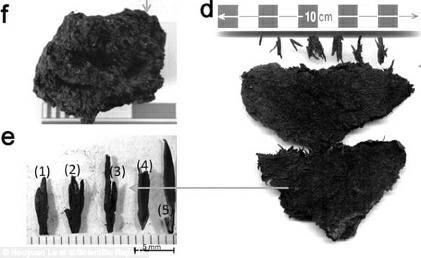

 |
Tea leaves that are estimated to be 2,150 years old have been found by archeologists in the tomb of a Chinese emperor from the Han dynasty. The unearthed remnants appear to be China’s earliest tea.
The leaves were discovered in the Han Yangling Mausoleum, a special tomb built for Emperor Liu Qi (188–141 BC) of the Han dynasty in northwest China’s Shaanxi province.
The finding was first published by a British science journal, and local newspaper Huangshang confirmed the news.
Yang Wuzhan, an expert from the Shaanxi Provincial Institute of Archaeology, also confirmed the discovery, but said that the tea leaves were discovered in one of the funerary pits of the tomb, not in a wooden box as reported online.
According to Yang, the tree leaf-shaped remains were sent to the Chinese Academy of Science for botanical identification and age analysis in 2008. The result was consistent with historical literature.
“The identification of the tea found in the emperor’s tomb complex gives us a rare glimpse into very ancient traditions which shed light on the origins of one of the world’s favorite beverages," Dorian Fuller, Director of the International Center for Chinese Heritage and Archaeology based at University College of London, was quoted as saying.
Liang Zi, an expert on tea culture, said that China was the first country worldwide that discovered, planted and utilized tea leaves. Evidence shows that as early as over 5,000 years ago, Chinese had already discovered tea’s detoxification properties.
Before this discovery, the earliest tea leaves found in China were in a mausoleum from the Earlier Song Dynasty (960–1,127).
Archeologists also found that tea had been introduced to the Tibetan Plateau 1,800 years ago, which indicates that a branch of the Silk Road passed through the Plateau at that time.
 PLA holds joint air-ground military drill
PLA holds joint air-ground military drill Charming female soldiers on Xisha Islands
Charming female soldiers on Xisha Islands Beautiful skiers wear shorts in snow
Beautiful skiers wear shorts in snow Getting close to the crew on China's aircraft carrier
Getting close to the crew on China's aircraft carrier A beauty's dancing youth
A beauty's dancing youth Chinese stewardess celebrate test flight at Nansha Islands
Chinese stewardess celebrate test flight at Nansha Islands World's first 'underwater skyscraper'
World's first 'underwater skyscraper'  "Rent me as your girlfriend!"
"Rent me as your girlfriend!" Top 10 weapons in the world in 2015
Top 10 weapons in the world in 2015 Top 20 hottest women in the world in 2014
Top 20 hottest women in the world in 2014 Top 10 hardest languages to learn
Top 10 hardest languages to learn 10 Chinese female stars with most beautiful faces
10 Chinese female stars with most beautiful faces China’s Top 10 Unique Bridges, Highways and Roads
China’s Top 10 Unique Bridges, Highways and Roads Tsai’s win not mandate for independence
Tsai’s win not mandate for independence When will Chinese films stop discriminating against women
When will Chinese films stop discriminating against women After race deaths, authorities say better safety measures needed
After race deaths, authorities say better safety measures needed Family planning officials find new role after one-child policy scrapped
Family planning officials find new role after one-child policy scrappedDay|Week